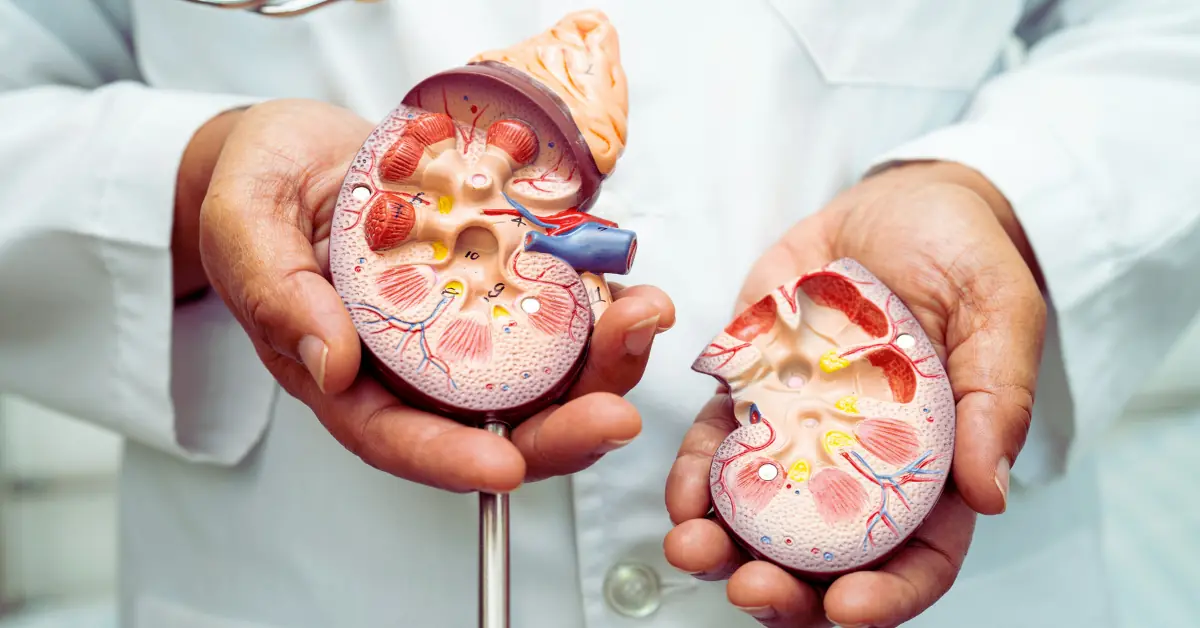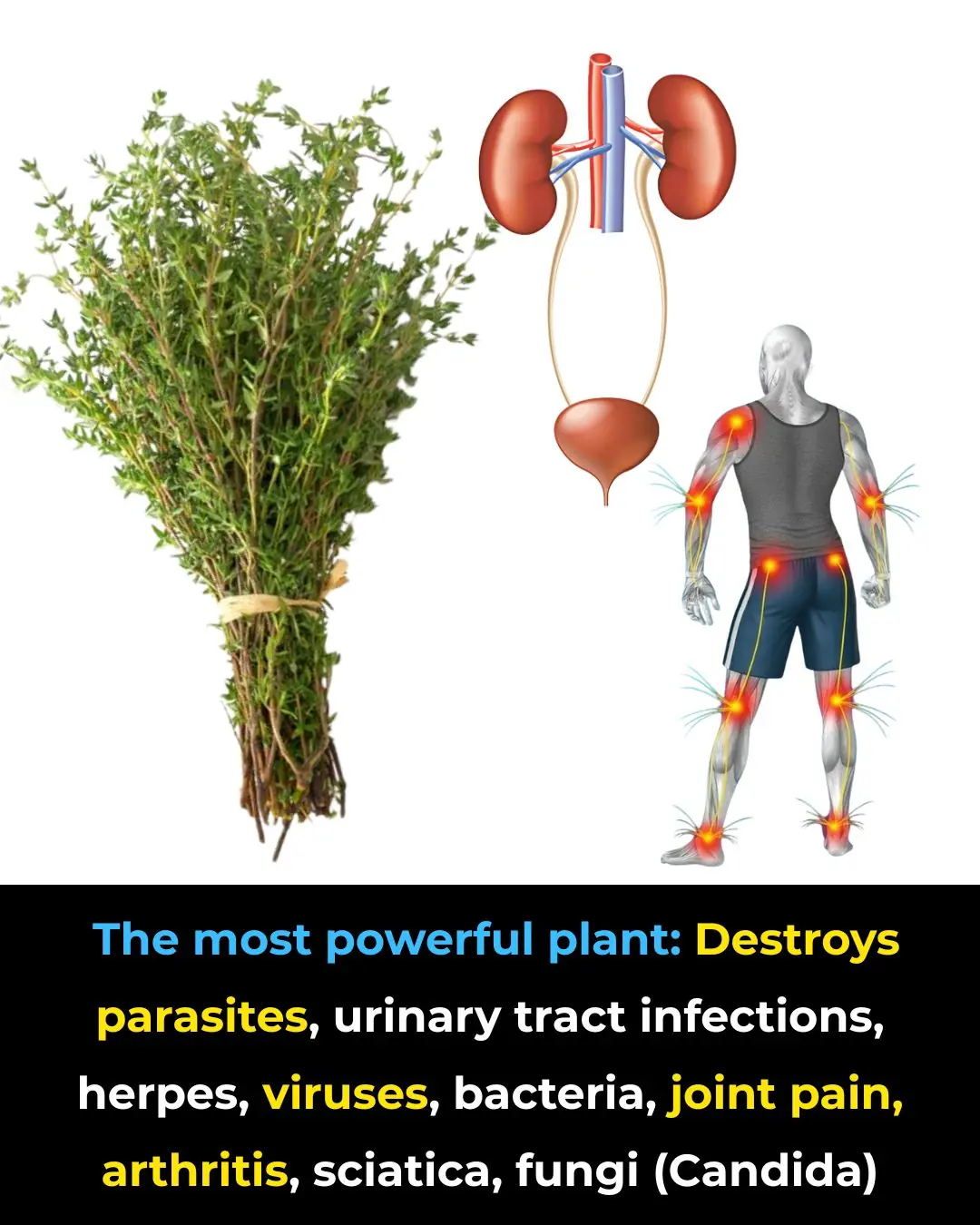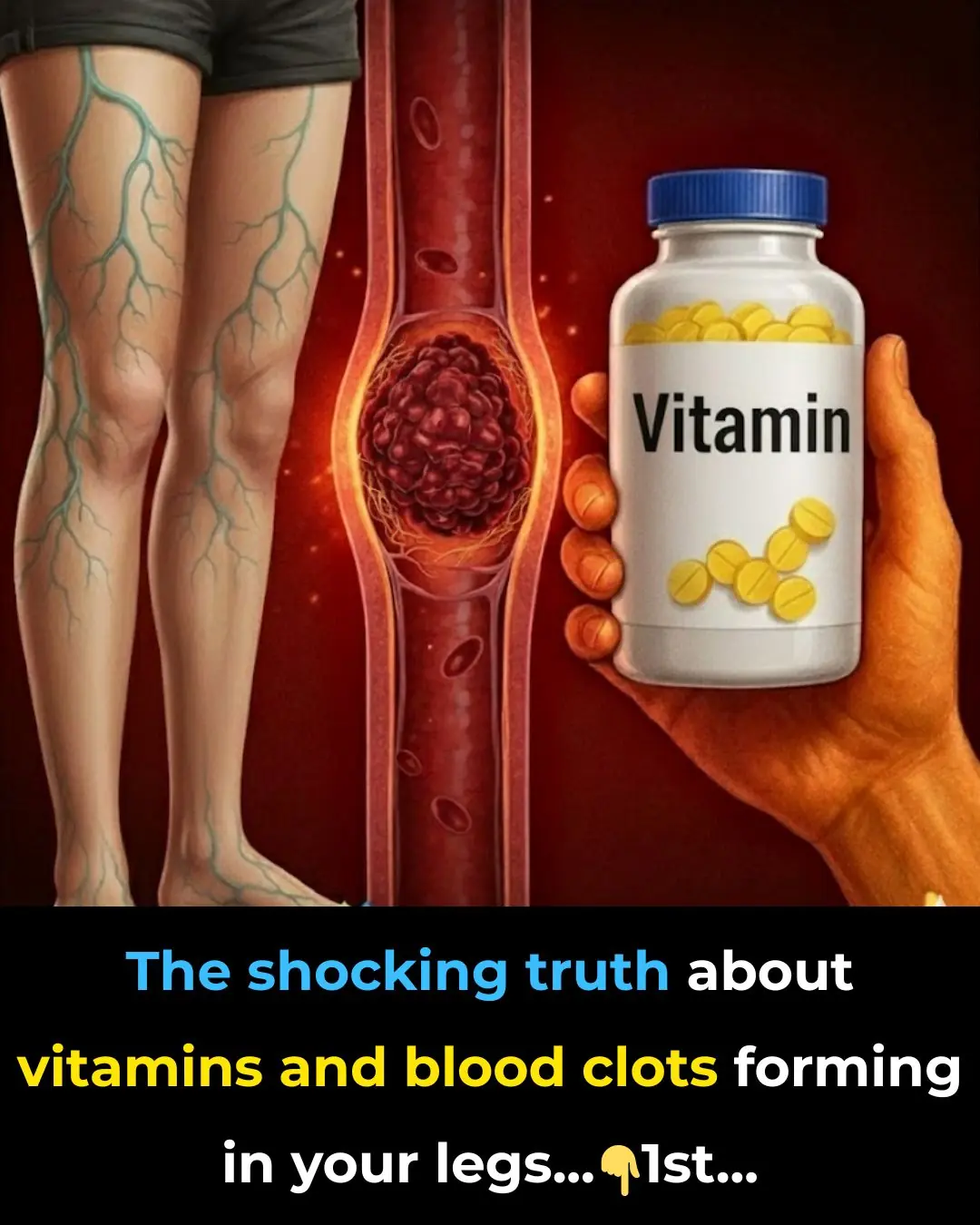
Top 3 Foods to Prevent Leg Cramps in Seniors: Strengthen Your Legs Naturally!
Top 3 Foods to Prevent Leg Cramps in Seniors: Strengthen Your Legs Naturally!
Have you ever been suddenly awakened by a sharp, painful cramp in your calf in the middle of the night? Or perhaps you’ve felt stiffness in your legs that makes standing up, walking, or climbing stairs feel uncomfortable? If so, you’re definitely not alone. Leg cramps are extremely common in older adults, and while they’re usually harmless, they can disrupt sleep, reduce mobility, and make everyday activities more difficult.
The encouraging news is that simple dietary choices can play a powerful role in preventing these painful spasms. By adding certain nutrient-dense foods to your meals, you can calm overactive muscles, support proper nerve function, improve circulation, and reduce the likelihood of cramps throughout the day and night.
Below, we explore the top three superfoods that help seniors strengthen their legs naturally, maintain muscle balance, and enjoy better mobility.

1. Eggs – The Muscle-Repairing Superfood
Eggs are often called “nature’s perfect food,” and it’s easy to see why. They’re one of the most nutrient-rich foods available, offering high-quality protein, essential vitamins, and minerals — all of which play important roles in muscle and nerve function.
Protein and Muscle Fatigue
One of the most common causes of leg cramps is muscle fatigue, which happens when the muscles don’t have the nutrients they need to repair properly. Protein is essential for rebuilding muscle fibers, maintaining strength, and preventing weakness.
Each large egg contains roughly 6 grams of complete protein, meaning it provides all nine essential amino acids your body cannot produce on its own. As seniors naturally lose muscle mass through a process called sarcopenia, eating enough protein becomes even more important. Consuming eggs regularly helps support muscle maintenance, reduces strain on the legs, and decreases the likelihood of nighttime or exercise-related cramps.
Vitamin D for Muscle Strength and Calcium Absorption
Vitamin D deficiency is extremely common among older adults, and it can directly contribute to muscle cramps, weakness, and chronic pain. Vitamin D helps your body absorb calcium, another mineral essential for proper muscle contraction and relaxation.
Egg yolks naturally contain vitamin D, making them a convenient dietary source — especially for seniors who may not spend much time in sunlight anymore. While eggs alone may not provide the entire daily requirement of 800–1,000 IU, they contribute meaningfully and can be paired with foods like fortified dairy, tuna, sardines, or salmon.
Vitamin B12 and Nerve Health
Vitamin B12 plays a major role in supporting healthy nerve signals. Low B12 levels can lead to tingling, numbness, and muscle spasms — symptoms many seniors mistakenly assume are caused by aging alone. Since older adults often absorb B12 less efficiently, eggs become an extremely valuable food.
Eggs supply both B12 and choline, two nutrients that work together to protect the nerves, support muscle coordination, and reduce spasms caused by nerve misfiring.
How Many Eggs Should Seniors Eat?
Most research suggests that healthy adults can safely enjoy 6–7 eggs weekly without negatively affecting cholesterol levels. Eggs can be boiled, poached, scrambled, or added to salads and soups for an easy, senior-friendly protein boost. Pair them with leafy greens, whole grains, or fruit for a balanced meal that supports muscle and nerve function.
2. Bananas – The Potassium Powerhouse for Muscle Balance
When most people think of foods that prevent leg cramps, bananas immediately come to mind — and for good reason. They’re rich in potassium, magnesium, and vitamin B6, three nutrients essential for healthy muscle activity.
Potassium and Muscle Contraction
Potassium helps regulate the electrical signals that control muscle contractions. When potassium levels drop — even slightly — muscles can become overly sensitive or tight, increasing the risk of sudden cramps. A medium banana contains around 420 mg of potassium, making it one of the easiest and tastiest ways to replenish this essential mineral.
Maintaining adequate potassium levels also helps balance sodium in the body, reducing fluid retention and supporting overall muscle comfort.
Magnesium for Muscle Relaxation
In addition to potassium, bananas also provide magnesium, a mineral that plays a key role in muscle relaxation. Low magnesium levels are strongly associated with frequent nighttime cramps, restless legs, and fatigue. Magnesium helps regulate calcium and potassium transport in muscle cells, supports ATP production (your muscles’ energy source), and prevents muscle tightness.
Eating bananas along with other magnesium-rich foods — such as nuts, seeds, tofu, or leafy greens — can drastically reduce the occurrence of leg cramps in seniors.
Vitamin B6 for Nerve and Muscle Support
Bananas are also a great source of vitamin B6, which supports healthy nerve signaling and reduces inflammation in muscle tissue. Seniors often need extra B6 to help maintain coordination, muscle tone, and proper nerve communication.
How Many Bananas Should Seniors Eat?
For most older adults, one banana per day is enough to maintain healthy potassium and magnesium levels. Those experiencing persistent cramps may benefit from two, though diabetics should pair bananas with protein or fiber to avoid blood sugar spikes.
Bananas make an excellent snack, smoothie ingredient, or breakfast addition for long-lasting energy and muscle support.
3. Nuts and Seeds – Tiny Foods With Big Electrolyte Power
Nuts and seeds are some of the most concentrated sources of magnesium, potassium, healthy fats, and amino acids — all essential for reducing cramps and maintaining healthy muscles.
Magnesium and Potassium Content
Many seniors don’t consume enough magnesium, making them more vulnerable to painful cramping. Fortunately, nuts and seeds offer an easy, convenient solution:
-
Pumpkin seeds: ~168 mg magnesium per ounce
-
Almonds: ~77 mg magnesium per ounce
-
Pistachios: ~290 mg potassium per ounce
-
Sunflower seeds: great for magnesium + vitamin E
These minerals help restore electrolyte balance, especially after activity or dehydration, and keep muscles functioning smoothly.
Healthy Fats Improve Circulation
Poor circulation is another major cause of leg cramps, especially at night. Nuts and seeds contain heart-healthy fats:
-
Omega-3 fatty acids (walnuts, chia seeds, flax seeds) help reduce inflammation and support blood flow.
-
Monounsaturated fats (almonds, cashews, pistachios) help arteries remain flexible and oxygenate muscles more effectively.
Better circulation means less strain on your leg muscles and fewer painful spasms.
Anti-Inflammatory Properties
Nuts and seeds are rich in antioxidants that reduce inflammation in the muscles and joints. Seniors dealing with arthritis, chronic soreness, or general stiffness may experience fewer cramps when they include anti-inflammatory foods daily.
Recommended Intake for Seniors
Because nuts and seeds are calorie-dense, moderation is important. Most seniors benefit from:
-
1 small handful (1 ounce) of nuts per day
-
1–2 tablespoons of seeds added to meals
They can be sprinkled over yogurt, oatmeal, salads, or blended into smoothies. Eating them in the evening may also reduce nighttime leg cramps by stabilizing electrolytes before bed.
Final Thoughts: Build a Cramp-Free Lifestyle Naturally
Adding eggs, bananas, and nuts and seeds to your daily meals provides essential nutrients like protein, potassium, magnesium, vitamin B12, and vitamin D — all of which directly support muscle strength, nerve function, and circulation.
Pair these dietary habits with:
-
consistent hydration
-
regular stretching
-
light daily activity
-
balanced electrolytes
Together, these strategies help seniors significantly reduce leg cramps and regain comfort, confidence, and mobility.
If you found this guide helpful, share it with someone who might benefit — and take the first step toward stronger, healthier legs today!
News in the same category


Drink This Twice a Day to Help Remove Uric Acid Before It Crystallizes and Causes Joint Pain

How to Use ¼ Teaspoon of Nutmeg to Fall Asleep and Soothe Insomnia Symptoms Overnight

10 Signs you are Eating Too Much Sugar

Three-Food Combo to Strengthen Your Heart

The Hidden Health Benefits of Bananas for Women

Chicken Egg, Garlic, and Honey — You’ll Thank Me for This Simple Recipe

This Syrup Will Stop a Cough Dead in its Tracks – Ginger Thyme Cough Syrup

Take just 1 a day for strong bones, pain-free joints & osteoporosis protection!

Similar To Opium: The Best Natural Painkiller That Grows In Your Backyard

World’s deadliest cancer: 8 early warning signs every older adult should know

Eat okra every day? Here’s what happens to your body!

Holy basil shown to cut stress hormone cortisol by 36% in 40 minutes

These 14 Foods Will Improve Your Kidneys’ Ability To Detox Like Never Before!

The Best Foods to Cleanse and Prevent Clogged Arteries

This Plant Is More Than Just a Kitchen Herb — It’s One of the Most Powerful on Earth

The surprising vitamin that helps break down leg clots—are you getting enough?

Why Your Hard-Boiled Eggs Have That Weird Green Ring

The shocking truth about vitamins and blood clots in your legs
News Post

Kidney doctor reveals 9 everyday medications that could be silently destroying your kidneys!

Don’t Toss That Tuna Can

4 things you shouldn't keep

Predictions made about King Charles’ future with whispers of ‘conflict’ as he celebrates his birthday

Clothes worn for a long time turn yellow, use this method to make them white again like new

A legacy of health: Soong Mei-ling – longevity and fight against cancer

EastEnders icon Pat Evans to return as Nigel’s dementia symptoms worsen

Celebrity Race Across The World’s Dylan Llewellyn comforted by Roman Kemp after revealing brother James’ heartbreaking death

How to remove fishy smell in the refrigerator with simple ingredients

Princess Beatrice hosts poignant premature birth charity event with support of her husband Edoardo

It only takes 5 minutes to plant green onions in the core of toilet paper, saving you money all year round.

Whatever you fry, just add 1 spoon of this powder to the pan, no oil will splatter, the food will be golden brown and crispy.

Boiled chicken that is not eaten up: Make this strange and easy to eat dish and it will be gone in no time.

Why you should bring a piece of paper when buying rice: Knowing the reason, you will want to follow it immediately

Anton Du Beke pays tribute to Strictly co-star in emotional Morning Live interview: ‘Always my hero’

Dip fish in this before frying: Fish will be crispy and won't stick to the pan, no need to worry about oil splatter everywhere.

White vinegar and dish soap: Perfect for removing stubborn stains

Gordon Ramsay shares update after revealing skin cancer diagnosis: ‘It was a scare’

Kelvin Fletcher and wife Liz share Fletchers’ Family Farm update as they admit they’re ‘expecting’ little lambs
